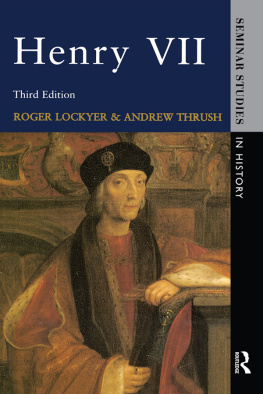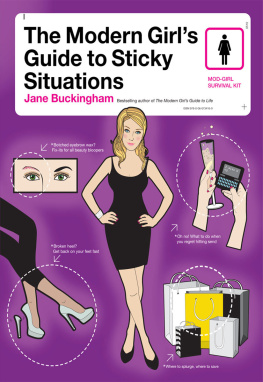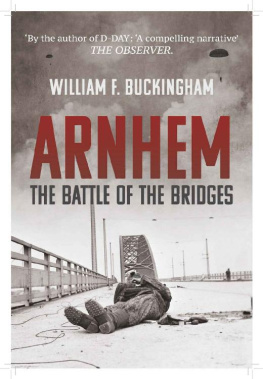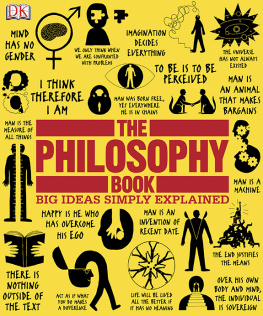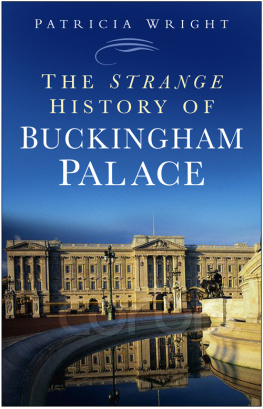BUCKINGHAM
A chalk drawing of Buckingham by Rubens, c. 1625
Buckingham
The Life and Political Career of George Villiers, First Duke of Buckingham 15921628
Roger Lockyer
First published 1981 by Longman Group Limited
Published in the United States of America by Longman Inc.
Published 2014 by Routledge
2 Park Square, Milton Park, Abingdon, Oxon OX14 4RN
711 Third Avenue, New York, NY 10017 USA
Routledge is an imprint of the Taylor & Francis Group, an informabusiness
Roger Lockyer 1981
All rights reserved; no part of this publication may be reproduced, stored in a retrieval system, or transmitted in any form or by any means, electronic, mechanical, photocopying, recording, or otherwise, without the prior written permission of the Publishers.
First paperback edition 1984
British Library Cataloguing in Publication Data
Lockyer, Roger
Buckingham.
1. Buckingham, George Villiers, Duke of 15921628 2. Statesmen England Biography 3. Great Britain History James I, 16031625 4. Great Britain History Charles I, 16251649 I. Title
942.06'1'0924 DA391.1.B9
ISBN 978-0-582-49415-2
ISBN 978-1-315-83642-3 (elSBN)
Library of Congress Cataloging in Publication Data
Lockyer, Roger.
Buckingham: the life and political carrer of George Villiers, First Duke of Buckingham, 15921628.
Bibliography: p.
Includes index.
1. Buckingham, George Villiers, Duke of, 15921628. 2. Great Britain Politics and government 16031649. 3. Politicians Great Britain Biography. 4. Great Britain Court and courtiers Biography. I. Title.
DA391.1.B9L63 1984 942.06'2'0924 [B] 84-5779
ISBN 0-582-49415-X (pbk.).
Transferred to digital print on demand, 2002
For Percy
Contents
PART ONE
The Apprentice Years |
PART TWO
Buckingham in Power |
Plates
| Frontispiece |
| A chalk drawing of Buckingham by Rubens. ( Albertina Museum, Austria ) |
| Between pages 140 and 141 |
| Between pages 364 and 365 |
Maps
Genealogical Tables
| Table 1. | The House of Stuart |
Anyone foolhardy enough to embark on a historical biography is confronted with the problem of striking a balance between exposition and analysis. I originally thought in terms of a number of narrative chapters alongside a number of thematic ones, but it rapidly became apparent that such a treatment would necessitate an intolerable degree of cross-referencing and would also result in a very odd distribution of the space available: Buckingham as patron of the arts, for instance, would take up a mere twenty or so pages; Buckingham as Lord Admiral would require a quarter of the entire book; while Buckingham as the formulator of foreign policy would need virtually a book to itself. Rather than produce a number of overlapping and ill-fitting chapters, I therefore decided to adopt a basically narrative approach, but to concentrate on certain themes at those places where they seemed to be most relevant. I apologise to readers whose concern is with specific aspects of Buckingham's career rather than his life as a whole, but would refer them to the index, which, under the general heading of Villiers, George, 1st Duke of Buckingham, includes a number of sub-headings designed to facilitate their quest.
A biography is, of course, chronological by its very nature, since it begins with birth and ends with death. And in the case of Buckingham, who was often described by his contemporaries as a comet or shooting star, there is considerable fascination in tracing his speedy transit across the heavens. Such an approach also has the merit of demonstrating how, at any given moment, Buckingham was subject to a wide variety of pressures. In 1626, for instance, at the crisis of his career, when he was facing a Parliamentary impeachment, he was also deeply involved in trying to maintain an adequate defence of the coasts despite a crippling shortage of money; in making preparations for long-range offensive operations; and in conducting a sophisticated and complex foreign policy. The rush of events in which he was caught up did not distinguish between separate themes because in practice they were not separate: problems overlapped and interacted to such an extent that none was capable of solution by itself, and to treat them in isolation is to make Buckingham's task seem much simpler than it really was.
However, I have not been content merely to establish what Buckingham did. I have also tried, within the limits of the evidence, to suggest why he did it. Inevitably I have found myself on occasion at variance with both traditional and more recent interpretations of Buckingham's motives. In the bibliographical note at the end of this book I have listed those publications which give a somewhat different picture of Buckingham as a politician, but I would like to call particular attention to Conrad Russell's work on early Stuart Parliaments which has done so much to change the accepted view of the period. In many instances I have modified my original interpretation in order to bring it into line with his. In others such as the reasons for the dissolution of the 1621 Parliament and the possibility of divergence between the political aims of Buckingham and Charles I I have preferred my own version. There are a number of issues on which the evidence is so fragmentary and elusive that it can legitimately be interpreted in markedly different ways, and rather than footnote every divergence between my own views and those of other writers, I would refer the interested reader to the books mentioned in the bibliographical note. But I should like to emphasise that where I have put forward interpretations of Buckingham's policies that differ from those of other scholars working in this field, I have done so only after careful consideration. In other words, I should not like it to be assumed that where I have strayed, historically speaking, into the paths of heresy, I have done so either out of arrogance or ignorance. Indeed, one of my aims in looking at the early Stuart political scene from the point of view of the Court and through the eyes of Buckingham, was to indicate a different, and in some respects a novel, perspective, and thereby contribute to the reinterpretation of this most exciting of periods which is now taking place.
Throughout this book I have modernised quotations, both in spelling and punctuation, and have extended abbreviations. For dates I have used the Old Style, current in England in the early seventeenth century, but have taken the year as beginning on 1 January and not 25 March.
In the many years spent in working on this biography I have received a great deal of help from the staffs of libraries and record offiices both here and abroad, and should like to express my thanks to them. As far as England and Scotland are concerned, this applies to the Berkshire County Record Office, Reading; the Bodleian Library, Oxford; the British Library, London; Cambridge University Library; the Codrington Library of All Souls College, Oxford; the Kent County Archive Office, Maidstone; the London Library; the National Library of Scotland, Edinburgh; the Public Record Office, London; the library of Royal Holloway College, Egham; Sheffield Central Library; and the Warwickshire County Record Office, Warwick.


